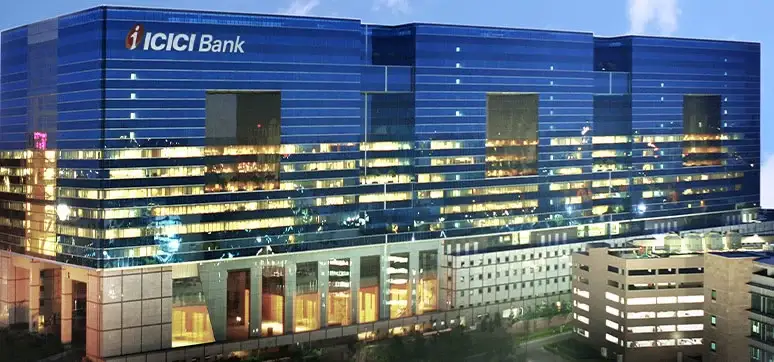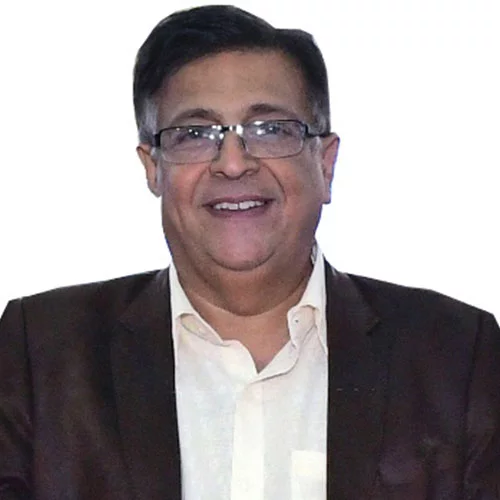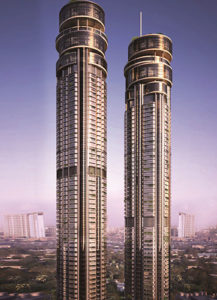
Please tell us about your company and yourself.
Navin Keswani (NK): Aluplex has been in the window, door and facade business since 1981. We started off as a window-door fabricating company in Mumbai and progressed to become one of the largest facade and fenestration companies in the country. Aluplex has built its reputation over brand credibility, which does not get built overnight. It is achieved only with excellence in whatever we do – excellence in terms of performance of the end product, customer service and team dedication. These three criteria took the company to super heights and helped us to earn an unparalleled name in the industry parse.
To tell you a little about the company and myself, Aluplex was started 36 years back because we realised that there was a need for this product. I realised that I had a bent of mind to understand complex technical joinery. These strengths initiated me to start the business and grow the company and to evolve as one among the top ones. We started the facade business later in 1995, not accidentally, but intentionally.
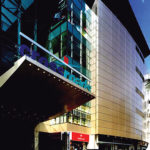
Tell us about your journey which started as a small window/door industry to one of the largest facade and fenestration companies in the country.
NK: To be honest, the facade and fenestration industry did not exist when we started the business decades back. Carpenters used to buy aluminium sections and glass from a local market and they themselves used to fabricate and install windows and doors.
Gradually, we introduced factory fabricated windows and doors and that is how we started our business. At present, our main line of work includes creating facades and also focus on high-end windows and doors as a second offer to the customer in terms of fenestration.
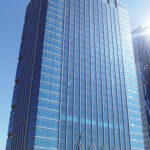
During one of my holiday trips abroad, I was totally rammed by the buildings there. This trip helped me to observe, study and know more about the technicality of facades. In India, I spoke to builders to introduce those techniques in their buildings. It was not easy for me to convince that the glass can stick to the exteriors of any building with silicone without external support.
Fortunately, we got the right customer to explore this and the right architect to understand my vision, and thus the first structurally glazed building in the country was built – The Ramada Inn Palm Grove Hotel in Mumbai. It was in the year 1995, and it took almost 14 years to bring in curtain walling in unitised structuring to India. Nonetheless, it was a growth oriented journey though it had been a long process.
Please tell us about your vision and what kept you going.
NK: We always had the vision to excel and a strong responsibility in offering the best quality. One can attain quality through best infrastructure management systems and processes. Slowly and steadily, we started building the needed infrastructure, importing systems and getting the right people as team members. ERP came in much later, which helped us to put all the management systems in track.
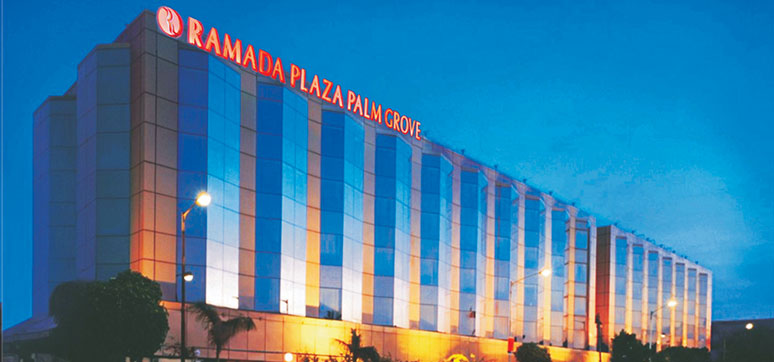
The whole process fell into places which led to better infrastructure. We also faced many ups and downs while going through this process, majorly in 2008 when the real estate industry was hit due to the recession. Now the system has improved and many industrial fairs like Zak has opened doors for people to understand and experience new technologies and products.
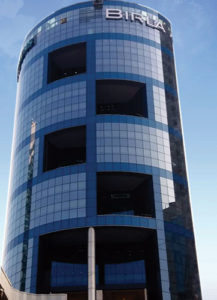
When did you see the real change in the facade industry in India?
NK: It took almost 10 years (1995 to 2005) for the country to witness the advent and growth of this industry. Even in 2005, people were not well-informed about the curtain wall systems, unitised glazing, powder coating, process of toughening of glass and the use of it. There were only three toughening plants in India in 1995, and GSC was one of them.
We used to conduct road shows and full-day seminars to create awareness about the new systems and products. By 2005, the market scenario changed and opened up. Suddenly there were two kinds of players – big boys and small boys – based on the business volumes and good infrastructure. Again Aluplex came first to the forefront and in 2008, we set up the largest curtain walling and facade company in Hyderabad.
We built a huge infrastructure with four conveyor lines and automatic CNC machinery. Interestingly, today in 2018, there is more demand of the products. Therefore, we are planning to expand our business to meet the present needs.
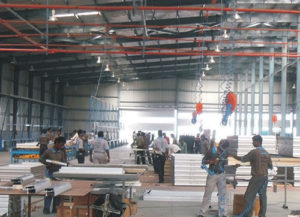
Please tell us about your company facilities and structure.
NK: Currently, I am serving as the Founder and CMD of the company. We have two full time directors, Karan and Rohan Keswani, who are my sons. They are well-versed in the field of facade and are vastly exposed to site works too.
They have been educated and worked overseas as well as in production in foreign companies. Below them, there is a whole group of people who are experts and well-trained in their respective jobs like production, execution, contract management, documentation control, etc. Everything is professionally set and we have a number of departments headed by the right person.
Tell us about your production facilities.
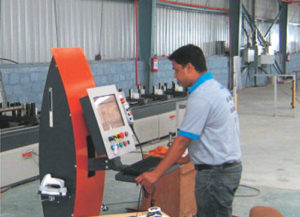
NK: We have two large facilities – in Mumbai and Hyderabad. We have production lines for making over 120 unitised panels in Hyderabad and about 80 unitised panels in Mumbai per day, thus a total production capacity of over 200 unitised panels per day. In the Indian market, no other brand is ripe enough to reach this level since we have the best infrastructure like CNC machinery and complete manufacturing plants, logistics, etc. In both our plants, we have a powder coating facility too. Both are very sophisticated and state-of-the-art plants with large areas for keeping stocks of materials and ready goods.
What has been your or your organisation’s contribution in bringing about the current revolution in the facade and the fenestration sector?
NK: It is interesting to tell you that we imported spiders for the first time in India from an Australian company called Austvision for the Hyatt Regency Hotel near the Sahar Airport in Mumbai, way back in 2002. We introduced the brand Kinlong into the country from China in 2003. The numerouno system window company like Shueco was also introduced by us in the year 2006 for a project in Mumbai. We were the first to use sunshade louvers from China for a project. Same about facade cleaning systems (Cradle Runways) and reflective glass for facades. These are a few of the firsts that we brought in the country. Thus Aluplex has played a major role in revolutionising the facade and fenestration market.
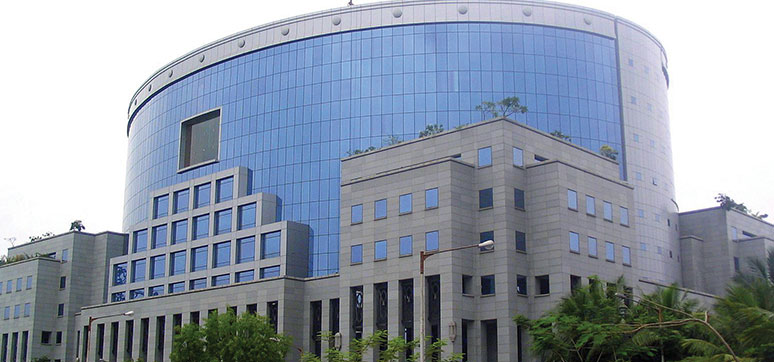
Besides, we also brought many foreign consultants in the country, who were introduced to many architects and builders, and played a major role in shaping the modern-day architecture in our country. This brings a sense of happiness and fulfilment by giving back to the industry.
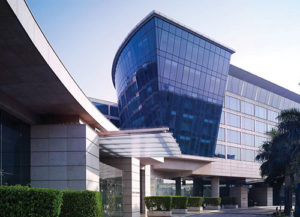
Could you share the details of your iconic and innovative projects?
NK: Every project we do is very important and has its own character. Some of the projects done by us were very different and challenging. One of the major challenging projects was the country’s first mall which we did – the Crossroads Mall in Mumbai by Piramals. When we completed the project, there were hordes of people waiting to get in and see the structure done in glass and aluminium, designed by DP Architects.
Almost at the same time, we did two other projects with unitised structural glazing and aluminium cladding for CitiBank and IL&FS at BKC, Mumbai, which took India by storm. Both are towering structures in terms of volume of work, complexity and workmanship. The projects had huge skylights installed and curved aluminium profiles are used in both the structures. These two projects were iconic from the beginning.
But I think the most iconic project till date has been the ICICI Corporate office building in Hyderabad, which was the largest façade project of its time. The Godrej One building in Mumbai is also one of its kind with a range of complex façade elements coming together to create the architectural intent desired by Pelli Clarke Pelli of New York.
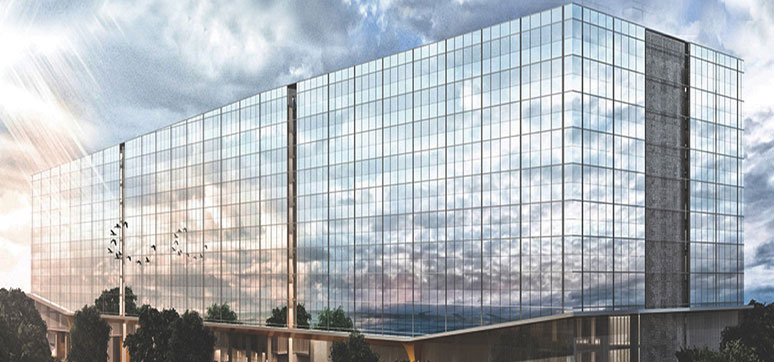
Right now we are working on the huge project Omkar 1973 designed by Foster+Partners. This would be the tallest residential building in India handed over to date. We are also working with the Lodha Group on their two buildings for the project ‘The Park’ as well as our working with DLF in Gurgaon on their Flagship IT SEZ called DLF Cyberpark. These buildings are statements by themselves. The facades for these projects are very different from each other and different skillsets are required for the execution of each of them.
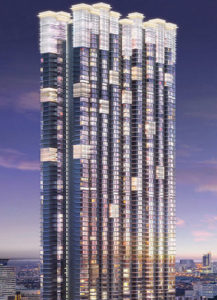
You interact with many architects, civil engineers, facade consultants and of course, many builders. How do you help your customer to choose the right product?
NK: By and large, today’s customers are well educated about the products. The architects are well-updated on latest technologies and products. Trade fairs like Zak plays a major role in spreading knowledge and enlightening clients. The seminars they organise are very educative and eye-opener for many. Magazines like Window and Facade too help a lot in disseminating information on various developments in the industry. Now, people are well informed of what they want to buy.
Today, there are suppliers for every brand present in the country – be it Saint Gobain, Kinlong, Gissee, Laval or Siderise. Through exposure in platforms like Zak Expo and also in media, the suppliers reach out to the decision-makers, including developers, procurement managers, architects, fabricators, etc. They are able to decide the product based on the projects, functionalities, technologies and specifications given by façade consultants.
Based on the design parameters, drawings or elevations of a project by the architect or consultants, we do a finite element analysis and bring in sophisticated and right software to create a value-engineered proposal, where in a builder or architect will get more for less, i.e., at a correct cost or price. One can see options available for different budgets which help in taking the right decision.
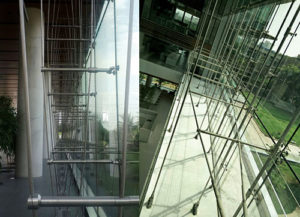
So many products are available in the market. How do you gauge the effectivity of the same?
NK: As mentioned earlier, there is no dearth of products available in the market. Gauging the effectiveness of the product is very important and critical. Suppliers of all these facade and fenestration products have their local offices, though they are foreign companies.
They have their representatives and warehouses in the country. The brand representatives suggest the correct product after understanding the requirements of the owner, architect and the facade consultant. Value engineered to cost proposal need to be offered by the brand representatives. They need to bring the sample to the table along with specifications, which need to be studied and joint decision should be taken.
As per your view, how important is the role of the right facade system in achieving desired aesthetics, optimum performance, acoustics and thermal insulation?
NK: Facade by itself is a standalone/independent wall structure of a building and it has to withstand wind loads, dead loads, seismic movements and most importantly, structural forces over a period of time. If you don’t know the right facade system for the building, then everything fails. It starts with air leakage, then leads to water leakage, wrong bracket fitting and structural deformity.
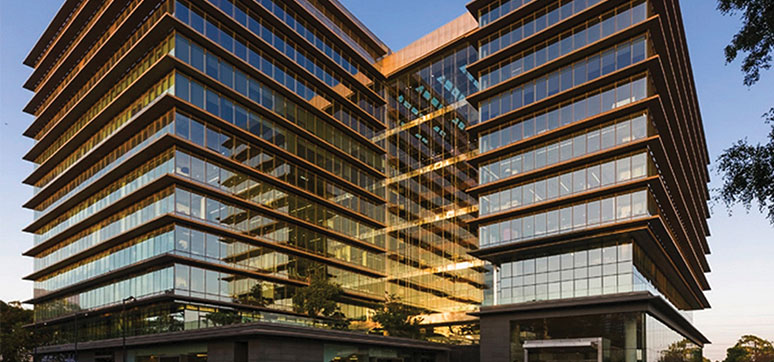
All these could be taken care of if a facade is correctly designed and engineered. Right design caters for the best system performance. One has to couple it with the correct type of glass in terms of the colour, precise glass parameters, coefficient, etc. Along with these, we should look at the right acoustic details to bring down the sound levels and the db levels. As far as the thermal insulation is concerned, analysis of the geographical condition is important, and based on that, thermal insulation principles are applied and right facade is installed.
What is the importance of testing the facades installed and the products used?
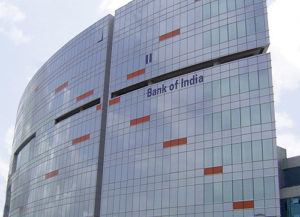
NK: It is very important to get the products tested. The hardware which comes with the system are tested by the manufacturer for certain approved standards (by ift Rosenheim or so).
Our products are all pretested as per certain parameters. There are post-test laboratories like Winwall in Chennai, FITI in Mumbai, to test the facade samples for its efficiency. There are a few testing centres in Dubai too such as Thomas Bell-Wright International Consultants and Al-Futtaim. Every single unitised curtain wall system designed, engineered and extruded by Aluplex is tested in one of the four centres.
What are the criteria for choosing glass in a typical high-rise project?
NK: Glass is a very important component of the entire facade. It normally comprises about 20 to 30 percent of the total facade cost. The criteria for choosing the glass involves architect in deciding the colour, the facade consultant looking at the performance with reference to the intensity of light and heat, the low e properties, the coefficient of the glass.
There are six factors to be considered – the shading coefficient/solar heat gain coefficient, U-value of the glass, relative heat gain, external reflectivity/ internal reflectivity, visual light transmittance and accoustic attenuation value.
Coming to execution, what do you think are the main hurdles/bottlenecks in the Indian construction scenario in terms of facades?
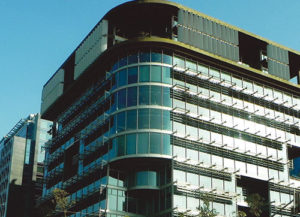
NK: One of the major challenges in facade execution in the country, is the lack of knowledge of the stakeholders involved. Often, the various stakeholders do not have the technical know-how and understanding of the subject.
For example, very often, developers award the facade contract for a project after the completion of the civil works, without understanding the lead times required for design and procurement prior to the production and execution at site. Thus, there are lapses in planning.
Similarly, there are some projects with specifications with low U-values without any stress on the shading coefficient, whereas the shading coefficient is more important in tropical climates, as majority of the heat gain is by radiation and not conduction.
Lastly, is the lack of availability of skilled site personnel. Therefore, we at ALUPLEX, have an internal training programme that we have developed over the years, and have a team of skilled site supervisors and engineers whom we have groomed over the years. Unfortunately, we are the one Indian company which is known as the “Training School of Façade Engineering” as almost every other façade company strives to hire/employ personnel who have been trained and groomed at Aluplex.
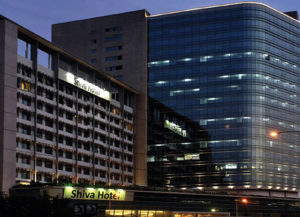
How important is the correct installation of selected facades?
NK: The correct façade is a combination of the correct design, procurement, production and installation. However, the design plays a pivotal role in connecting all the elements, wherein ingenious and innovative design ensures that the selected facades use the apt materials (procurement), whilst ensuring efficient production, and most importantly simplifying the installation work done at site.
Thus, we strive to limit the number of mistakes possible by site labour, by ensuring the majority of the assembly is done at our production facility and limiting the skilled workmanship required at site. Additionally, at the same time, we have the most experienced and skilled site team with an army of supervisors, engineers and site labour, some of who have been with Aluplex since the inception of curtain walling in India. Thus, we ensure that the final product delivered is flawless and are able to create the feeling of customer delight in the hearts of developers and architects.
How do you see the facade and fenestration industry evolving over the next five years?
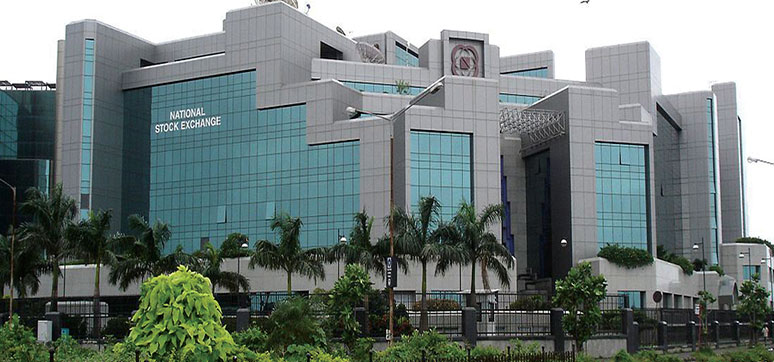
NK: In 1996, there were only three toughening plants as I mentioned earlier. And I had predicted that by 2005 there would be 100 toughening plants. You will be surprised that by 2015, there were about 187 toughening plants in our country. It just tells about the growth of the industry. This is a very large industry and there is a lot of scope. I see the next five years in the same way. Tremendous growth is foreseen in terms of number of fabricators and volume. A large number of small players will become large industries and a few of the big players will disappear or exit.
The market is very ruthless and it demands the correct price for the value engineered product. In the next five years we will see a whole lot of professional game players, and most of them will be Indian brands. Foreign players might not dare to enter the country since ours is a complex market to work with.
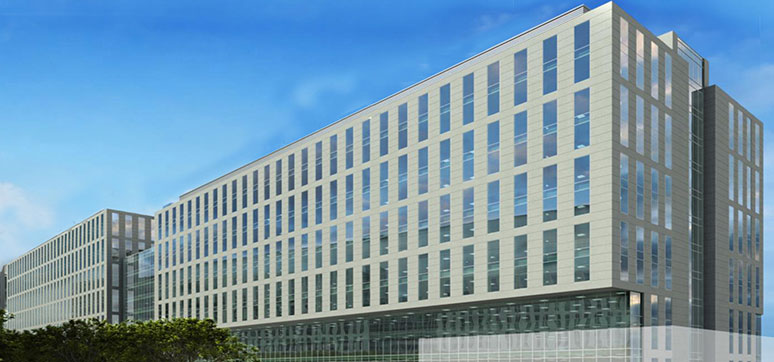
The volume of business will increase and boom in the next five to seven years. It takes a good five to seven years to build a complex structure. Today there are about 70 super structures and about equal numbers of complex structures being built or are on the drawing board of architects. All these will get completed in the next five to seven year. This growth by itself is going to be stupendous.
Building tall structures in India are not as easy as doing the same in Europe or Hong Kong or any other places abroad, may be because of lack of knowledge and many other pitfalls of the industry. We need better safety rules and educate the labourers about the same.
What advice would you like to give to the manufacturers/fabricators of doors and windows in India?
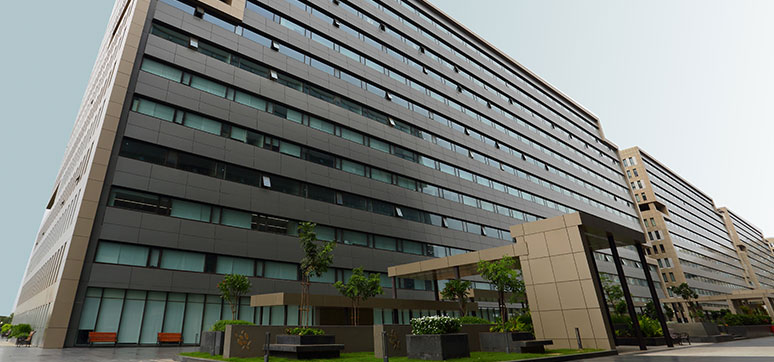
NK: One has to produce the ‘best quality’ – be it the hardware, extrusion products or processed double glass. The quality has to be maintained while bringing them together in the form of complex joinery in desired shapes, also while erecting on the site and installing as a curtain wall, window or door. The end product has to be superior in every way, which can withstand all calamities for the next 20 to 40 years. My sincere advice to all is to stick to quality. Quality should be the middle name.
